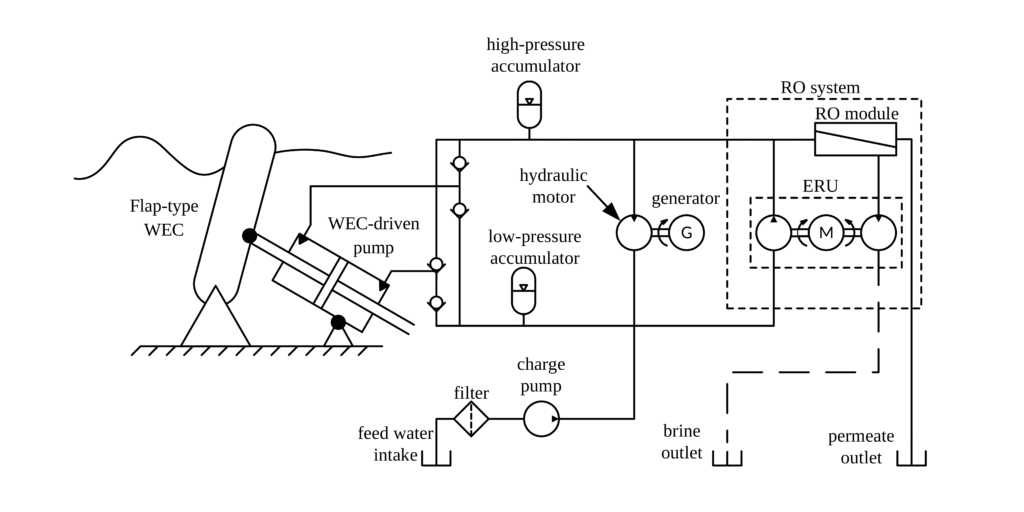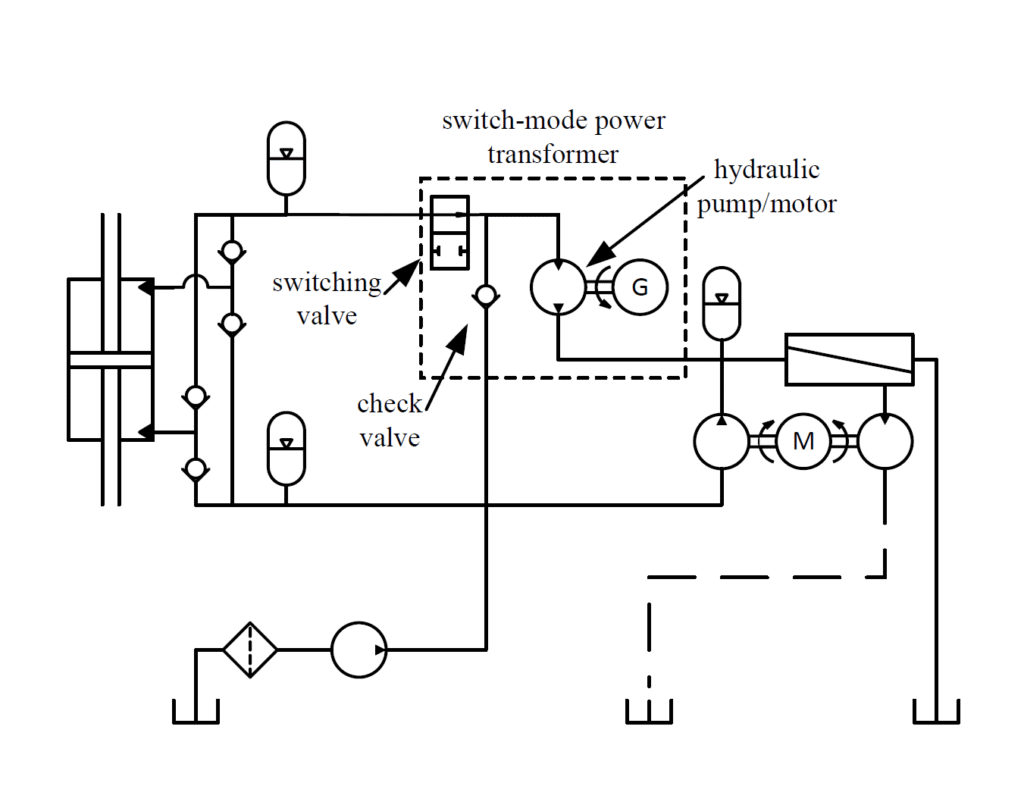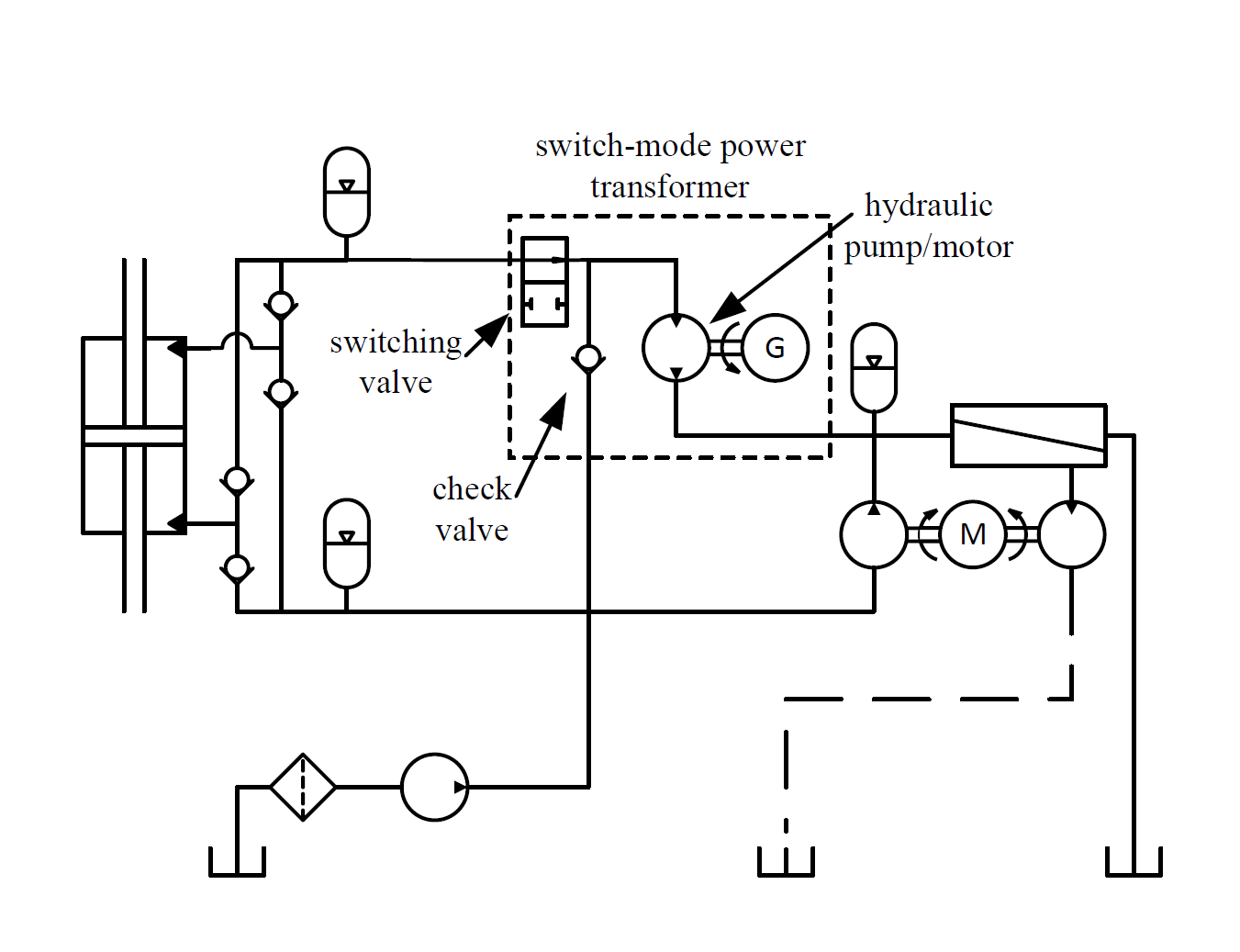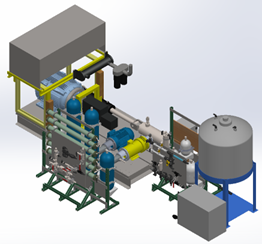We have been working on what we believe is one of the only practical applications of a switch-mode power transformer for hydraulic systems.
Background
While working for Resolute Marine Energy, we were finding that the main seawater pump in a direct-to-hydraulic type, wave-powered reverse osmosis plant needed to be extraordinarily large for the amount of power it was handling. This pump is driven directly by the wave energy converter (WEC) and pressurizes the seawater for the reverse osmosis process like in the illustration below.

We looked into several ways to achieve better design performance based on our choice of the hydraulic circuit architecture. First, we used a parameter sweep combined with automated design optimization to reveal what the trade-off between pump size and desalination productivity was for the system as imagined by RME and whether we could manage to achieve similar levels of performance with a smaller pump than they had arrived at in their preliminary design efforts. Second, we looked into a reconfigured hydraulic system that placed the hydraulic motor and generator in series with the WEC-driven pump and the reverse osmosis module and performed a similar design study. Third, we went further with the series-type architecture by adding a couple of valves, a high-speed switching valve and a check valve, forming a switch-mode power transformer analogous to those found in power electronics.
Our study of the series-type architecture with the switch-mode power transformer showed that we could reduce the size of the pump by a factor of 5 to 10 times!
The Technology
A schematic for the circuit architecture is shown below. You can see that the switch-mode power transformer is placed between the WEC-driven pump and the reverse osmosis module and also connects to the low-pressure branch of the circuit. The power transformer is pressure-bucking type. It takes a fraction of the flow it delivers to the reverse osmosis module from the high-pressure outlet of the WEC-driven pump, via a fast switching valve, at a much higher pressure than the RO module operates. The rest of the flow is taken from the low-pressure branch through the check valve. The pulse width modulation (PWM) of the switching valve cause the hydraulic motor to alternate between these two pressure sources and provides flow at an average of those two pressure to the reverse osmosis module. The fraction of the period that the valve is open vs. closed determines the ratio of those pressures. The fluctuation in pressure between these two intake ports is smoothed by the inertia and torque response of the generator and results in more moderate pressure with a higher flow rate than was generated by the WEC-driven pump.

In other words, the power transformer takes high-pressure, low-flow rate and provides a lower-pressure at a higher flow rate using the periodic switching of a high-speed valve between the on and off state.
Generally, this approach to power transformation and modulation of actuator force and speed for hydraulic systems requires very high switching frequencies to achieve adequate control performance (on the order of 100Hz). Valves that are fast enough for those applications are hard to make cost effective and to operate efficiently. However, for this application the system only needs to adjust at the speed of the waves and we can make due with slower valves that use less power to operate.
Progress on this technology
Details for the methods and results from our study of this hydraulic circuit architecture can be found in the following published papers:
- Simmons, Jeremy W., and James D. Van de Ven. ”A Comparison of Power Take-Off Architectures for Wave-Powered Reverse Osmosis Desalination of Seawater with Co-Production of Electricity”, Energies 16, no. 21 (2023): 7381.
- Simmons, Jeremy W., and James D. Van de Ven. ”Switch-Mode Power Transformer in a Wave-Powered, Reverse Osmosis Desalination Plant”, Proceedings: 2019 ASME/BATH Symposium on Fluid Power and Motion Control, (2019)
Our patent for this circuit architecture is US 11,731,081 B2.
We are performing additional research and development on this technology. Our current work involves the design of the high-speed ON/OFF valve that makes this system work.
Have any questions? Contact me!

